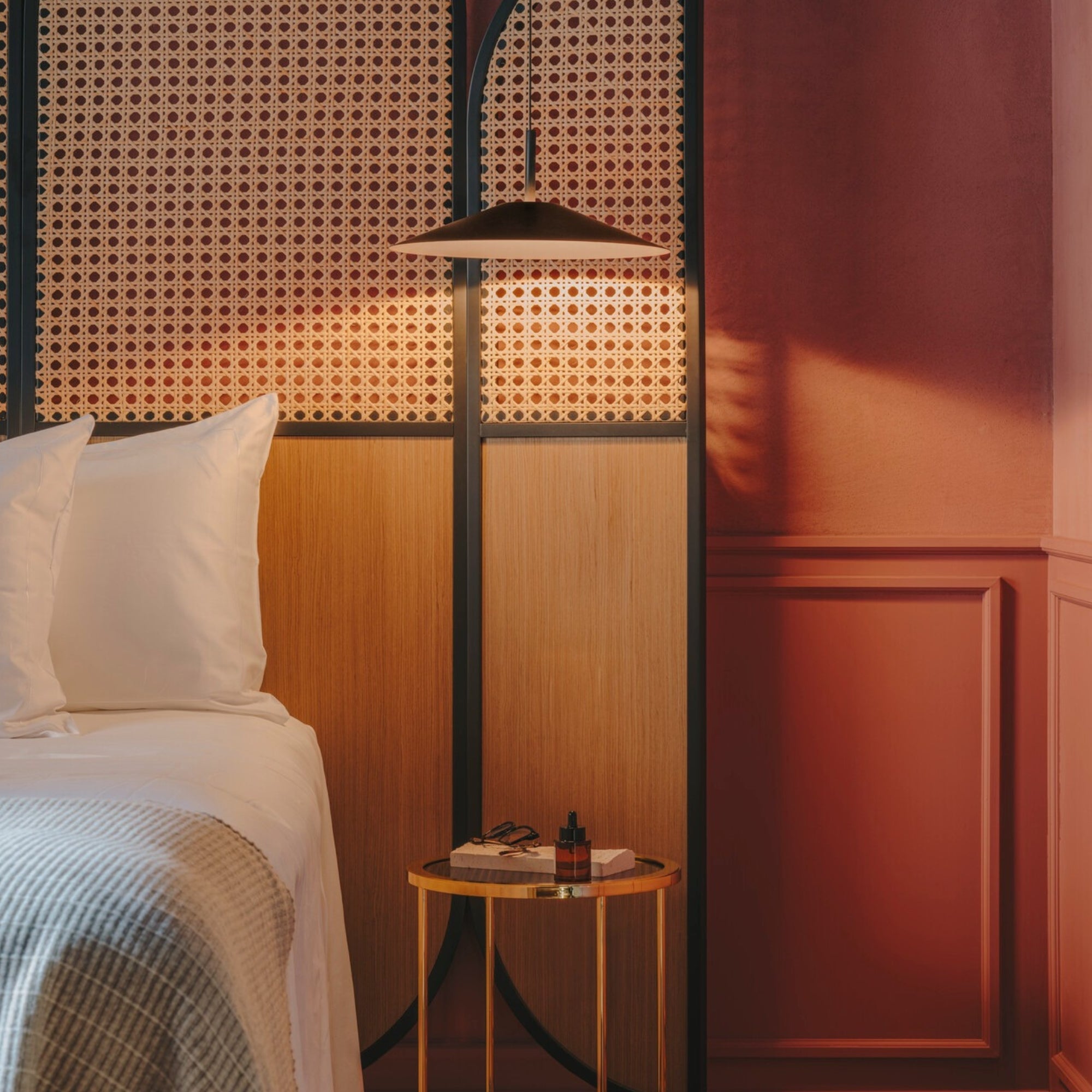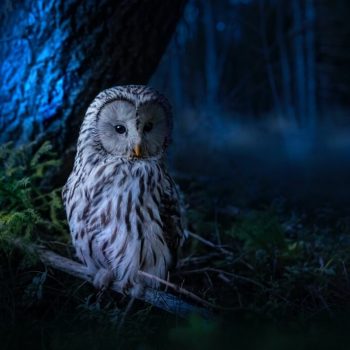If you live in an urban environment, you may have noticed you see the stars less clearly or frequently. Sadly, this is the effect of increased light pollution in our dark skies.
Light pollution and sky glow have a devastating impact on wildlife in our gardens and cities, from glow worms to migratory birds and nighttime predators. It can also affect the human sleep cycle, impacting our daily lives.
In this guide, we’ll explain the impact light pollution has on our environment and go through the small things you can do to help reduce light pollution.
Table of contents
- What are “dark skies”?
- What are dark sky reserves?
- What is sky glow?
- How does light pollution affect our environment?
- 7 practical ways you can make your outdoor lighting Dark Skies-friendly
What are “Dark Skies”?
Dark Skies are skies free from artificial light, which allows you to see the stars more clearly. However, due to global urbanisation, our night skies are becoming less visible.
What are dark sky reserves?
Luckily, organisations are already working to protect our skies from lighting pollution. The International Dark Sky Association protects certain areas that are naturally dark at night so they remain free from light pollution.
A Dark Sky reserve or a Dark Sky park is “private or public land possessing an exceptional or distinguished quality of starry nights and nocturnal environment.”
The association protects large areas of naturally dark sky by creating peripheral zones. Many of the UK’s national parks are also Dark Sky reserves, including Exmoor, the Brecon Beacons, Moore’s Reserve, Snowdonia, the North York Moors and the Yorkshire Dales. Northumberland also has one of the highest-quality dark skies in the UK and is a designated International Dark Sky Park.
What is sky glow?
Sky glow is the amber haze you can see in the sky caused by light pollution. Sky glow happens when artificial, human-made light meets scattered dust and gas in the atmosphere. The haze then obscures celestial objects and creates a faint illumination in the sky.
How does light pollution affect our environment?
Light pollution affects our planet’s natural ecosystem and can contribute to the growing climate crisis. Here are the primary ways it negatively affects life on our planet.
Wildlife
Excessive artificial light at night disturbs the natural rhythms, cycles and behaviours of multiple nocturnal species, for example, birds, bats, moths, beetles and some bees.
Many of these creatures are nocturnal pollinators. Excessive light deters them from being active at night, and plants and trees miss out on that crucial nocturnal pollination. Furthermore, without dark corridors, creatures like bats can’t travel through feeding grounds and often get stuck in one area.
Many nocturnal species are attracted to light, for example, insects or migratory birds, which creates confusion and disorientation when navigating at night. Disorientation because of excessive light also affects mating habits and wake-sleep cycles for many species.
For more information on how you can help protect dark spaces and the wildlife in your garden, read our blog, How to help reduce your impact on local wildlife with mindful outdoor lighting.
Humans
Excessive light can also affect human circadian rhythms, disturbing our sleep cycles and, as a result, failing to get the right kind of sleep results in a weakened immune system and overall health. It can also negatively impact our mental health, increase stress and reduce life expectancy.
The environment
Lights also need energy to function. More lights mean increased electricity consumption, which increases carbon emissions and contributes to the climate crisis.
7 practical ways you can make your outdoor lighting dark skies-friendly
As lighting experts, we always design your lighting schemes with the environment in mind. We help you create functional lighting schemes that keep the surrounding area of your property safe while also taking into account our impact on the environment and light pollution.
If you want to create a more dark skies-friendly lighting scheme without compromising on practical outdoor lighting, here are our 7 top tips to reduce your impact on the environment and the sky glow in your area.
1. Only install essential lighting.
Reduce your light pollution by only adding the light you need to your outdoor lighting scheme. There is no way to eliminate outdoor lights and keep your periphery safe from trip hazards or intruders, so essential lighting is necessary. Only illuminate features like paths, steps and doorways, but you can reduce the number of aesthetic lights that are non-essential.
2. Space out your lights
Try to avoid clustering your lights together and space them out more. Light clusters create more light pollution and reduce visibility due to increased glare.
3. Timers, dimmers and motion sensors
Reduce the time your lights are on with timers and motion sensor PIR lights. PIR lights only illuminate when they sense motion, so only turn on when you need them. Furthermore, with lighting control timers, you can set your lighting scheme to turn off when you’re not using it. Or reduce the brightness of your lighting with dimmers.
4. Reduce brightness
Using bulbs that are less than 500 lumens can help reduce light pollution.
5. Colour temperature
A cool white or blue hue light colour temperature has a more significant impact on sky glow. Lights that edge into the cool or blue colour temperature spectrum also affect wildlife like insects and birds more as they are more attracted to this type of light.
To tackle this issue, opt for warm white light, red light or lights on the warmer side of the colour temperature spectrum. Try to stick to garden lights with a 2700k colour temperature rating or lower.
6. Shield or point your lights down
Using shielded or hooded lights, downlights or pointing your lights downward directs light to the feature you want to illuminate and reduces light spillage into the atmosphere, which reduces sky glow.
7. Use energy-efficient or eco-friendly bulbs and lights.
The increased CO2 concentration in the atmosphere contributes to sky glow and unclear skies. Aim to use energy-efficient light bulbs or eco-friendly lights. LED lights save 80% less energy than traditional bulbs, reducing your carbon emission footprint and CO2 in the atmosphere.
Go one step further and opt for solar lights. Solar lights use sunlight to charge and don’t consume any electricity, making them the most environmentally friendly outdoor lights.
Dark sky-friendly lights at Moonlight Design
Now it’s your turn. A few small changes can make a big difference in reducing light pollution. However, if all this seems overwhelming, we can help at Moonlight Design.
As expert lighting designers, we always consider the environment around your property when designing lighting schemes. Whether you live near a protected species or in a designated dark zone, we always use outdoor lighting that is Dark Skies-friendly.
If you would like help designing a lighting scheme that will allow you to navigate your property safely and keep it secure from intruders while being mindful of light pollution, we can help. At Moonlight Design, we can help design an environmentally friendly lighting scheme using our in-house lighting design service. Contact us today to start the process!
Related blogs




Leave a comment
This site is protected by hCaptcha and the hCaptcha Privacy Policy and Terms of Service apply.